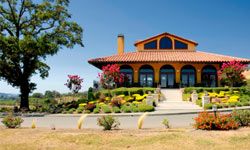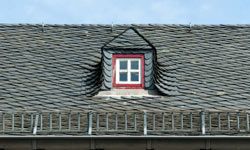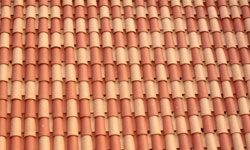Key Takeaways
- Roofing materials greatly influence a building's ability to handle heat, with some materials reflecting sunlight and heat away from the building, while traditional materials like shingles absorb and transfer heat inside.
- Innovations like cool-roof coatings, radiant barriers, and materials such as slate, terra cotta and specially treated tiles are effective in warmer climates by preventing heat absorption and improving energy efficiency.
- Choices in roofing material, including advanced options like green roofs and photovoltaic systems, not only contribute to cooler interiors but also offer environmental benefits and energy savings.
When you consider how a building keeps cool, the most common thing that comes to mind is air conditioning. But the first real line of defense against the heat is a building's roof. And a hot day in the life of a good roof should include releasing -- not storing and absorbing -- the sun's rays.
Think of it this way: If you're sitting on a chair covered in black fabric and you go to the kitchen for a cup of coffee, your chair will likely be warm when you get up -- and it will stay warm until you return. But if your chair is metal, clay, molded plastic or slate, for example, it might be slightly warm to the touch when you get up, but it will be entirely cooled by the time you return. Traditional shingle roofing materials hold and transfer heat in a similar way. Roofing tiles made of felt-like materials overlaid with asphalt and tar will hold heat, and even transfer it downward into a structure, while other types of roofing will reflect light and heat upward and away from a building instead.
Advertisement
Roofing materials and colors impact how buildings -- and even entire cities -- handle heating and cooling. United States Energy Secretary Stephen Chu even suggested that painting all roofs and roads white or light-colored could reduce the electricity costs of running air conditioning by 10 to 15 percent [source: Connor]. Is it that simple?
Before grabbing a ladder and a can of patio furniture paint and exterior primer, see what roofing materials and techniques -- from the traditional to the high-tech -- have proven to work well in warmer climates.



